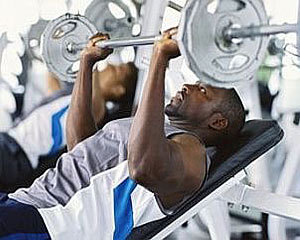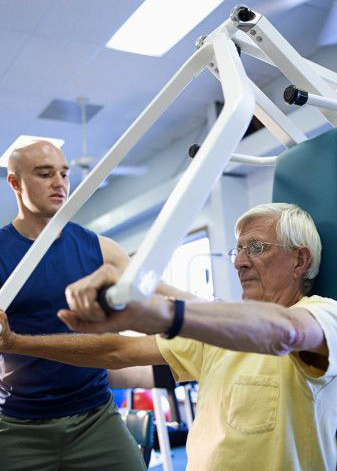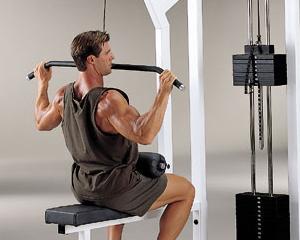HOW TO GET BREAST MUSCLES
 Beautiful torso, perhaps the first thing that catches the eye when looking at a bodybuilder. Well-built pectoral muscles are a source of your pride and, in a good way, the envy of those around you.
Beautiful torso, perhaps the first thing that catches the eye when looking at a bodybuilder. Well-built pectoral muscles are a source of your pride and, in a good way, the envy of those around you.
There is no big secret in the question of how to pump up the chest – in this case there are well-known time-tested exercises – bench press and push-ups on the uneven bars. And we will not offer you any other revolutionary exercises. But do not rush to break away from the text, because even where everything seemed clear, there will always be important nuances, often not known even to the pros. Therefore, the goal of this article is to point out topical aspects of the performance of old and tested exercises.
Bench press
The “technical” bench press – in all variants, is one of the most effective and loved by many exercises, for pumping primarily the pectoral muscles. It is worth noting that it also gives a good load on the delta and triceps. So it is worth adding complexes of exercises to these muscle groups on the day when you are doing the bench press.
When working with the pectoral muscles should take into account their individual characteristics. If from the bench press (or push-ups on the uneven bars) you have an excessively increased lower part of the pectoral muscles (the pectoral muscles “flow down”), then it makes sense to replace it with a press lying on an inclined bench.
We now turn to the nuances associated with the safety and technique of bench press performance. As a rule, problems with this exercise occur when bodybuilders take on his “enhanced” options. For example, bench press with a very wide grip and bench press over a neck. Although some bodybuilders, due to anatomical features, can perform these varieties without any harm, but this is rather an exception to the rule. If you have ever had a shoulder injury, forget about the “enhanced” options forever. And if there was no injury, then the passion for these two types of press can easily reward you with such an “acquisition”.
And here’s why – the wider the grip, the stronger your shoulders and elbows unfold. And the stronger the shoulders are, the easier it is to injure them. Note, the widest grip of all permissible – this is when your forearm is parallel to each other (with the neck lowered on your chest). If at the moment when the fingerboard is on the chest, your wrists are spread wider than your elbows, then you are asking for trouble. This is all the more true if you lower the neck close to the collarbone. Reduce the width of the grip and lower the neck on the nipples or even lower – “lower” here means “closer to the waist.” Do not try to “stretch well” the chest, lowering the neck on the collarbone or, even worse, almost on the neck. The effect of such an extension is minimal, but the risk of injury to the shoulders is enormous.
Push-ups on the bars
Push-ups on the uneven bars – a traumatic exercise, but performed in compliance with the safety rules – one of the most useful exercises for pumping the pectoral muscles, and not only. This exercise is complex, it involves many muscles in the work.
If push-ups, even if they are performed slowly, cause you to have severe discomfort in the shoulder joints, then you can hardly get used to them. Then you should stop this exercise (especially if you have ever had a serious shoulder injury).
If you are able to normally push out on the uneven bars, it is great. Just never forget about the warm-up: first you need to perform push-ups without additional load and with limited “depth”, then gradually increase the “depth” to full (but without “busting”). You can not relax in the lower position, hanging on the shoulder bones, and limply “dive” down. Your muscles should be tense all the time. When you start push-ups with a burden, tied to a belt, its weight must be increased again slowly and gradually. And when you reach the maximum load, do not work with it for months without interruption. Remember that the load must be changed cyclically.
As well as bench press, push-ups on the bars develop primarily the pectoral muscles, as well as the deltas and triceps. To focus on the triceps, it is necessary to keep the body in a vertical position and push up with the head up and elbows pulled back. If you want to develop better pectoral, lean forward, “bend over”, slightly “spread” elbows and lower to the maximum possible depth. Coming out of the lowest point, still remain “hunched.” To distribute the load on the muscles more evenly, take the average between the two described positions.
No need to disfigure the exercise, trying to transfer the entire load only to any one group of muscles. It is much more natural to push out in a convenient position. The more comfortable you are, the more weight you can take without violating technical rules. Well, for you the most important thing is to overcome the weight. It is this approach that turns push-ups into a basic exercise, simultaneously pumping the chest, shoulder girdle and arms.
Well-developed and beautiful pectoral muscles – this is a difficult and painstaking work, during which, the main thing is not to forget about security – after all, one mistake can cross out all your labors.



